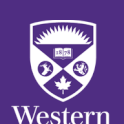
Popular Press
Curricula to Call Their Own
Department of National Defence, Canada
(2013)
Abstract
KABUL, AFGHANISTAN - “"You know, we’ve had mentors off and on for years and didn’t make much progress. The difference now is that we have a plan. Do you think our system will work?"” asked one of our advisees. He is a medical specialist, the director of his department, and a colonel in the Afghan National Army (ANA), and he was referring to the newly introduced Graduate Medical Education (GME) program at the National Military Hospital in Kabul. I am confident that the answer to his question is yes, not because the system is perfect – it has as yet unresolved shortcomings – but because he referred to it as “"his system."” For about two years, Canadian Armed Forces (CAF) health care personnel have been deployed to Kabul as part of the NATO Training Mission-Afghanistan, to advise the ANA military medical system on developing a number of teaching programs and assisting them in rebuilding their medical education system. The Armed Forces Academy of Medical Science (AFAMS) is the ANA’s centre for medical training of a variety of occupations, from nursing and dentistry, to lab and preventive medicine technicians. The GME team, comprised of general duty and specialist physicians, has been charged with assisting and advising AFAMS on developing and implementing residency training programs for specialty physicians. This has been a challenging task. How is an internal medicine specialist created? What is a surgeon in Afghanistan? What is the desired capability of a physician when training is done? What resources are there for individual training and education? Could these questions even be answered in a war-weary and insecure environment that is in the early process of recreating physical, social and cultural infrastructures? Roto 0, the first Canadian team to deploy on this training mission had the initial task of defining, with their AFAMS colleagues, what was required and possible in an ANA training program. The desire for a full slate of “"Western"” residency programs had to be tempered with the reality of available resources and prioritized needs. A core group of seven “"Warrior Care"” specialty programs was agreed upon. In combination these will have the greatest impact on ANA medical care. It was recognized early on that a residency curriculum by itself would not be a sustainable teaching tool, and that an entire educational support system was required. Support to the faculty to develop instructional skills and administrative support, as well as structure to all of the programs was required. Most importantly, all of these programs and changes required the active participation and understanding of Afghan faculty, residents and administration. Once the residency programs and required support systems were defined, it was up to Roto 1 to write the curricula to support the seven programs. Off-the-shelf Western curricula, while useful as models, are simply not directly transferable to Afghanistan. Modification to fit both local needs and resources was required. The Infectious Disease and Preventive Medicine program, in particular, demonstrated creative design and development. This was a completely novel residency and is directed exactly towards the major Afghan public health concerns. This residency was also unique in that for the first time all the ministries responsible for running GME programs were involved in its creation. The result is a program that will be the first nationally standardized residency program. This is a remarkable achievement in a country with, at best, fragmented medical standards. Roto 1 ended on a high note with the start of the first class of residents. The work of our rotation, Roto 2, has largely involved refining and continuing to implement the curricula developed by our predecessors. As well, we have continued to help strengthen the structure of the programs. The process for faculty accreditation has been resuscitated, and there is an increasingly effective Residency Director. The Residency Committee has become independent – setting its own agendas, taking a hard and thorough look at the curricula and developing plans to deliver them. Up to now, we have presented regular faculty development lectures. The new Faculty Development Committee has just set its first seminar agenda and all presentations will now be given by AFAMS faculty. What used to be our team saying, “"We believe this is what you need,"” is becoming more of their team saying “"This is what we’ve planned."” There are still important mismatches between teaching aspirations and abilities. Adequately trained faculty are in short supply in some departments, and other areas are plagued with a sluggish and unresponsive supply system. What is clear though is that the medical training system has developed from being foreign and somewhat imposed, to locally adopted and managed. The complete transfer of all aspects of the GME program to AFAMS will be the job of Roto 3 – but the degree of local ownership even at present allows us to have confidence in the continued local ability of the ANA to competently train medical specialists. Their system will work.
Keywords
- Afghanistan,
- medical education,
- Canadian Armed Forces
Disciplines
Publication Date
July, 2013
Citation Information
Peter Zeindler. "" Canadian Armed Forces News. July 2013
